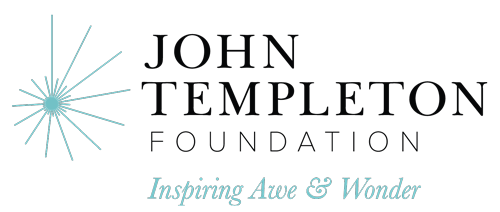Possible Preaching Themes
Possible Scientific Resources
- Shame
- Reconciliation
- Memory
- Shame plays a prominent role in today’s Gospel reading, and – to a lesser extent – in the second reading (implied) from Philemon. But how does shame work?
- In-Depth Resources:
- Shame may be something that is developed before we can even speak, as the physical anatomy of brain’s limbic system is developing. See: Gerald Fishkin. The Science of Shame And It’s Treatment. Marion: Parkhurst Brothers, 2016.
- Brief Resources:
- Similarly, this article from Science Daily proposes that shaming children makes them much more aggressive in the long-term https://www.sciencedaily.com/releases/2008/12/081219172143.htm
- Shame is deeply tied to depression and anxiety, which – in turn – are tied to each other. Thus, early shaming can have long-term health impacts for the whole of our lives. https://www.scientificamerican.com/article/the-scientific-underpinnings-and-impacts-of-shame/
- Joseph Burgo in this article from Vox, conversely argues in Why Shame is Good that shame can be an impetus for change and good https://www.vox.com/first-person/2019/4/18/18308346/shame-toxic-productive
- In-Depth Resources:
- Reconciliation is another theme in all of today’s readings, and a prevailing theme in the Church’s preparations throughout Lent as we move toward Easter. Likewise, “religion” and “faith” are often proposed as two subjects that cannot be reconciled to one another. Interesting homiletical possibilities can be exchanged between these two frames of science/religion and reconciliation/estrangement:
- In-Depth resource on Faith and Science:
- Edward Kelly, Adam Crabtree, and Paul Marshall, ed., Beyond Physicalism: Toward Reconciliation of Science and Spirituality. Lanham: Rowman and Littlefield, 2019.
- On reconciliation of individuals and communities:
- How the brain’s physical anatomy changes with forgiveness and reconciliation https://www.neurologylive.com/view/neurobiology-forgiveness
- How forgiveness has health benefits https://www.templeton.org/wp-content/uploads/2020/06/Forgiveness_final.pdf
- Memory:
- Inside the Science of Memory from Johns Hopkins University: https://www.hopkinsmedicine.org/health/wellness-and-prevention/inside-the-science-of-memory
- Human beings obviously “remember,” but what about the universe itself? Is information “stored” to be recalled for later use? How the Universe Remembers Information by George Musser: https://nautil.us/how-the-universe-remembers-information-7999/
- In-Depth resource on Faith and Science:
Homily Outline Combining Resources
Homily Outline
- Isaiah’s reading today begins with God “opening a way in the sea and a path in the mighty waters,” but the Hebrew is better translated as “track” or “course” rather than “path.” Why does this matter?
- Because it implies that the way to reconciliation is not a narrow or untrodden way, but a way already set by God that is well-worn and well-used: many have received the mercy of God in the past and many will in the future. In short, we are not alone in the receiving of mercy.
- Similarly, the reading goes on to imply that God’s mercy (the “track”) is a creative activity of God that elicits praise from the creation itself. In essence, God’s mercy creates a new creation within the old creation, a forward-looking theme of eschatological hope (embodied in the resurrection of Jesus) to which the Lenten is consummated at Easter.
- The second reading comes from one of Paul’s earliest letters occurring within larger narrative of Paul’s personal story.
- Remember: Paul had been imprisoned and separated from many of the Churches he founded, but his letter to the Philippians is intended to let them know that he is still alive, and – yet more confident – that he will be freed through the miraculous work of God.
- Like Isaiah, this freedom is a “track” or a “course” that has already been set. Freedom will come, of that there is no question. This, too, is the purpose of the Lenten preparation for Easter: that freedom is coming and it has been established since the foundation of the world.
- The most important of today’s readings is the Gospel from John, an impressive tale of not only of forgiveness and reconciliation, but also a reminder to us of how we internalize systems of shame and guilt.
- Science is beginning to understand the ways that our brains are hard-wired to maintain systems of self-guilt and self-shaming from before we can speak. Shame may also serve as a biological tool to keep us safe. Even so, “shame” as a concept is one that is overused in destructive ways, diminishing the dignity of the human person, and having neurobiological consequences that are far-reaching.
- Scientists are beginning to propose that it can cause aggressive and vengeful behavior, a repeating cycle of destruction that passes from generation to generation.
- Science is beginning to understand the ways that our brains are hard-wired to maintain systems of self-guilt and self-shaming from before we can speak. Shame may also serve as a biological tool to keep us safe. Even so, “shame” as a concept is one that is overused in destructive ways, diminishing the dignity of the human person, and having neurobiological consequences that are far-reaching.
- Today, John tells us that the woman caught in adultery is – literally – made to stand “in the middle” where she can be not only stoned, but publicly shamed before her impending death. Nowhere in John’s narrative today do the scribes and Pharisees speak to her; they only speak about her, never affording her the dignity to answer for herself.
- “Shame” ignores the individual’s specific circumstance and instead rests upon generalizations that are applied by others from outside. The law cited (Deut. 17:6, 19:15), requires a witness to the crime; in this story, none is ever produced, placing the accusation on questionable legal footing.
- Jesus acts beyond the Mosaic prohibitions on adultery by appealing to mercy, implying that the shaky legal case for the woman’s stoning is wrong, even if the case had been clear (which it is not, i.e., absence of witnesses).
- Beyond this specific instance however, an important understanding of morality is raised: what is correct or legal is not always right. The distinction is one of grace rather than legalism.
- It is of great interest to note Jesus’ writing on the ground. What is he writing? What is the finger of the incarnate Holy One writing that has not been written before?
- Like at the creation, could the Word be writing a new word into being, i.e., that God’s new creation is reconciliation and forgiveness rather than shame and vengeance?
- Lastly, it is only Jesus – the Word – who speaks words to the woman, and as he does, proclaims the freedom she needs and – in a pre-Easter miracle? – an escape from death itself.
Related Homily Outlines
Couldn’t find what you’re looking for?
Try searching with another filter

Preaching with Sciences

Edward Foley, Capuchin
Duns Scotus Professor Emeritus of Spirituality
Professor of Liturgy and Music (retired)
Catholic Theological Union
Vice-Postulator, Cause of Blessed Solanus









